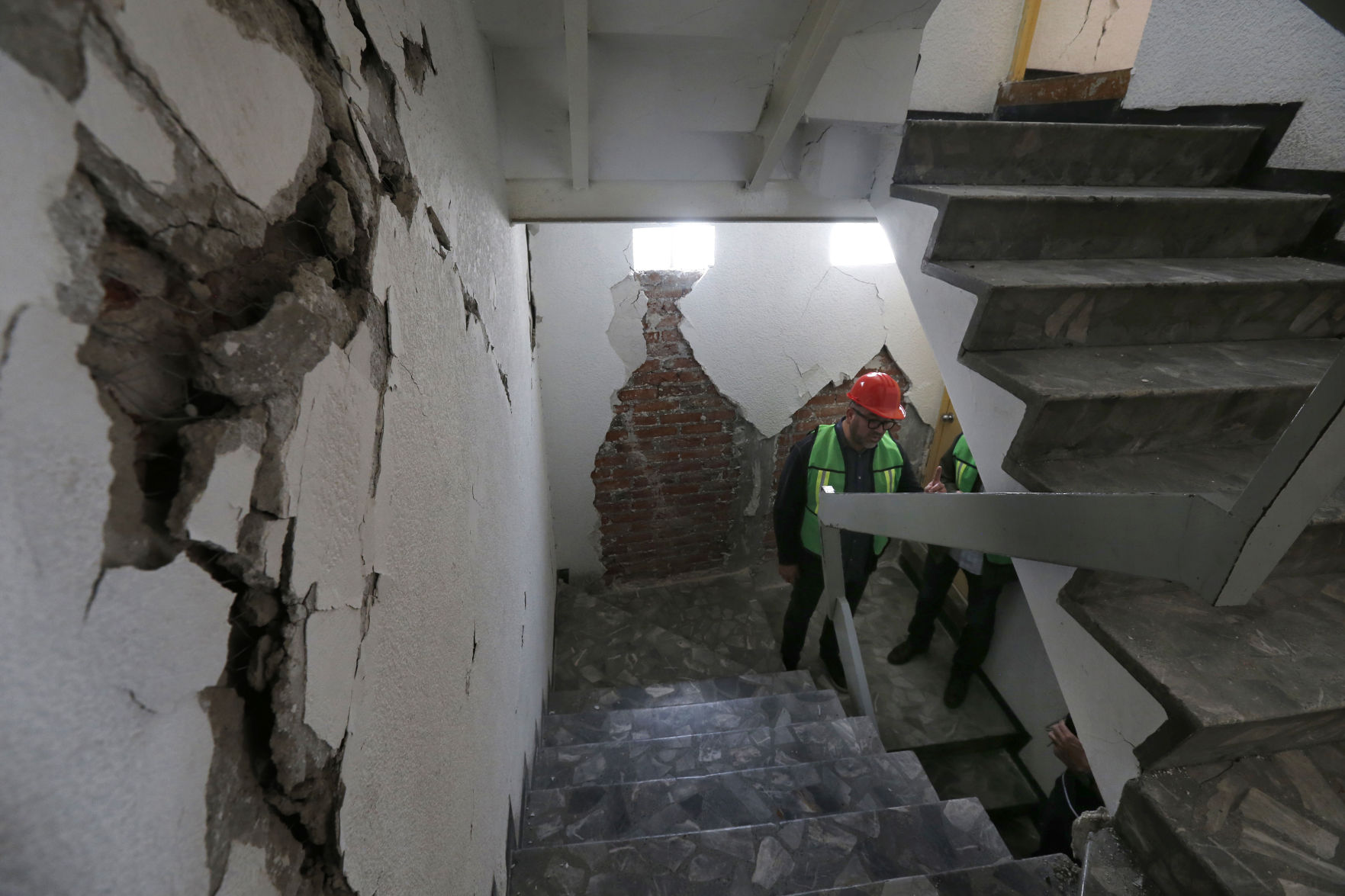MEXICO CITY (AP) — Mexico City began demolishing on Monday the first of an estimated 150 to 200 buildings that were badly damaged by a Sept. 19 earthquake, the head of the city’s construction safety institute said. The 7.1 magnitude
MEXICO CITY (AP) — Mexico City began demolishing on Monday the first of an estimated 150 to 200 buildings that were badly damaged by a Sept. 19 earthquake, the head of the city’s construction safety institute said.
The 7.1 magnitude quake killed 369 people and completely collapsed at least 38 structures, mostly apartment buildings. About a half-dozen others partly collapsed.
But Mexico City’s construction safety chief Renato Berron said hundreds of other buildings suffered serious structural damage. He said some will be repaired or reinforced, but the priority will be to demolish structures that are endangering neighboring buildings or passersby.
“We will give priority to those buildings that are creating a risk for inhabitants, neighbors, pedestrians, drivers, and those structures that endanger neighboring buildings … Why? Because they are becoming a problem of public order. That’s the truth,” he said.
Berron said the city has begun demolishing the first three of 11 structures already approved for demolition, and that dozens more will follow in coming weeks.
He declined to say how much it would cost or how long it would take; many fear legal appeals by some residents. Berron said consensus had already been reached with the owners of the first 11 buildings to tear them down,
The tottering buildings, many of whose concrete columns shattered or were seriously cracked, have increased Mexico City’s already bad traffic problems and forced more people from their apartments because of fears that a neighboring building might collapse.
“These will be demolitions done with machinery, not explosives, of course,” Berron said.
It may be a difficult, almost surgical procedure in many cases; many apartment buildings in Mexico City are built with gaps of less than six inches between neighboring structures, and the quake caused some apartment blocks to lean until they are actually resting on a neighboring structure.
Berron said 90 percent of the collapsed and damaged structures were built prior to the 1985 earthquake, after which building standards were tightened.
He said pre-1985 design was the main factor, but others cited some more sinister reasons for the collapses.
Mexico City councilwoman Margarita Martinez said a council investigation found that 11 damaged buildings had been affected by the 1985 quake but inadequately repaired back then.
Martinez said about five buildings constructed after the 1985 quake were damaged and may have had corruption in their building process.
Finally, she said that three buildings that collapsed – killing a total of 24 people – had heavy billboards or communications antennas mounted on their roofs, and that the extra tons of weight added by those billboards may have played a role in some collapses.
A 2010 law prohibited putting billboards on top of most buildings, but some previously-existing signs remained.
The city is currently weighing other upgrades to the post-1985 building codes to make the even tighter and avoid collapses like the ones frequently seen during the Sept. 19 quake.
Authorities are looking at so-called flat-slab construction , where floors are supported only by concrete columns, without intermediate support beams, which fared poorly in the quake.
———
This story corrects that 90 percent of buildings built before 1985


